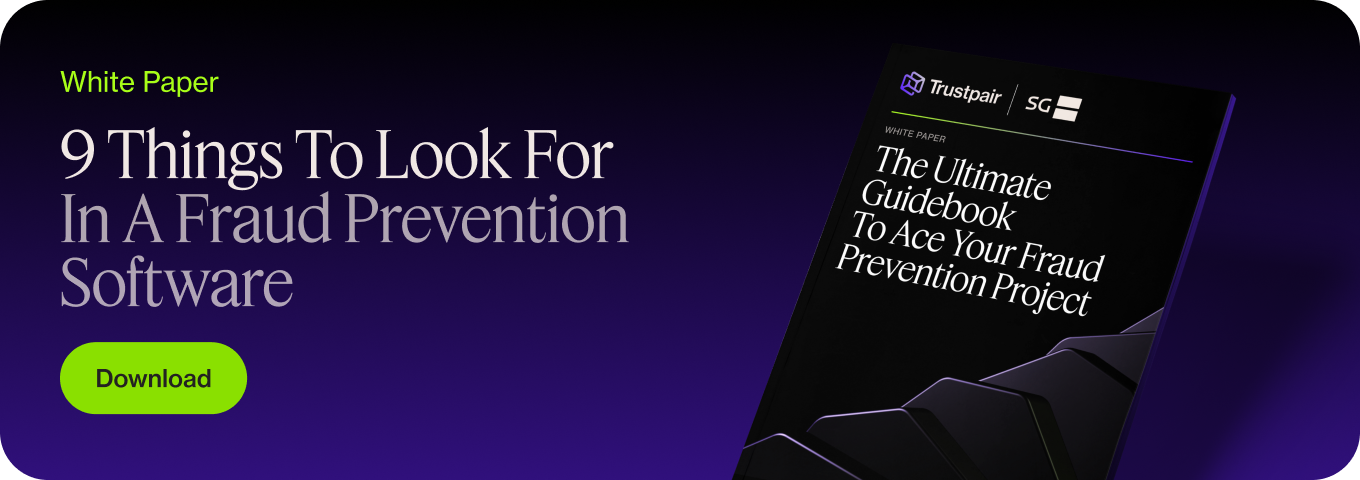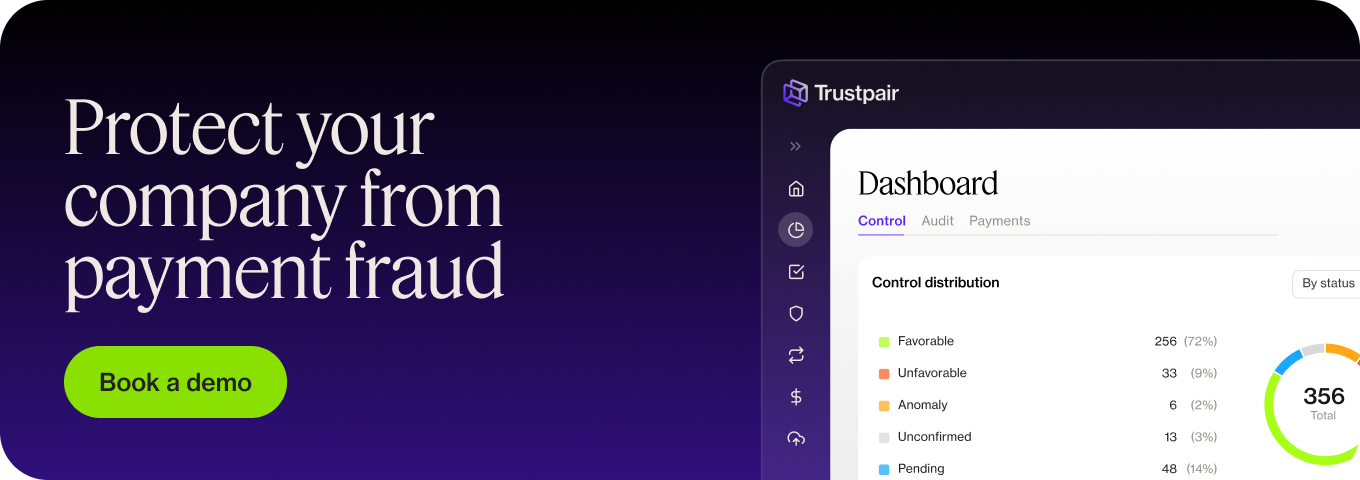In a time where 60% of US companies are targeted by at least one fraud attempt each year, fraud prevention is a critical issue. The most effective way to prevent payment fraud is by implementing fraud prevention software that will automate international bank account validation, making sure finance teams are paying the right vendor. But what should you look for in your fraud prevention software? What should be the criteria to choose the solution that fits your needs best? Our answers in this article.
In our latest white paper crafted with BearingPoint and Société Générale, get your ultimate checklist of steps and criteria to implement the right fraud prevention software for your business.
Account validation reliability
The goal of a fraud prevention platform is to assess vendor bank account ownership to guarantee payment security. That’s why it’s key to choose software capable of evaluating vendors accurately and delivering clear assessments.
Evaluations must be delivered with an actionable status as well as additional information on the analyzed vendors, helping you take action if needed. Assessments should be gathered in reports that classify vendors and bank accounts by type of risk. These reports will give you an overview of your vendor database’s health.
The right geographic coverage
To deliver accurate evaluations, fraud prevention solutions rely on internal and external data sources. These data sources enable them to centralize banking data and company information which in turn makes vendor-data evaluation possible.
Choose a solution that offers sufficient geographical coverage: If you work with foreign vendors, the platform needs to have access to international data sources to cover your vendor data.
Ability to handle special cases
It’s not always possible to deliver a binary risk assessment for a vendor. Many reasons can make it difficult to deliver a precise evaluation: lack of information, new bank account, etc. Some cases can be difficult for business teams to handle: false positives, factoring companies, etc.
These cases need to be handled. This is where the expertise of the platform you choose comes into play. Choose software that offers additional controls done by experts in case of uncertainty around a vendor.
Account validation traceability and collaboration
The platform you choose should support your finance team in their risk management routine. Beyond the controls performed by the platform, the tool should be a business partner and a facilitator in the fight against fraud.
Making sure your payment chain runs smoothly from start to finish is easier if you have traceability over all actions taken. Choose a solution that tracks who does what and adapts to your existing processes. In addition, make sure it offers monitoring dashboards, communication features, and customizable workflows for your teams.
The highest IT security standards
Security is a priority when it comes to vendor data. It’s critical to select a tool that meets the highest IT security standards. You can rely on the security standards set by your own IT department, or on international certifications.
Simple user experience
Financial professionals usually work in a complex technical environment. Choose a solution with a user-friendly interface to enable easy decision-making.
Training sessions should be limited: if you need 10 hours to learn how to use the tool, it’s probably not a good fit. User experience is essential if you want the tool to be used.
Integration within the existing technical environment
Financial professionals already use many digital tools: ERP, TMS, Procurement, and so on. To keep things simple, choose a cloud solution that’s quick to install and can integrate into your existing technical environment. Go for flexible integration options like APIs or native connectors.
Some tools offer anti-fraud modules. Although useful, they don’t go as far as a dedicated solution and generally offer a few basic functions. Think integration and performance. Combine your business tools with fraud prevention pure players. Consider the human resources required to deploy this integration: Will you need a full-time developer? Will you have a dedicated consultant?
Easy deployment thanks to professional support
Implementing a new tool within your ecosystem requires a specific skill set that you won’t necessarily have in-house. Make sure your platform offers dedicated technical support for deployment, via a project manager or technical consultant.
Deployment is the most important phase of the project. It’s crucial to rely on professional and expert support. You should be provided with technical documentation, test sets, and a technical environment for pre-production and production.
Customer support and guidance
If you encounter any difficulties with the tool, you need to be able to contact customer support quickly and easily. It’s best to choose a tool with customer service centers in the US (or abroad for foreign entities) to facilitate communication and avoid time differences. Find out about the availability of customer service and languages.
Looking for a cutting-edge fraud prevention tool that already wiped out fraud at 200+ large companies worldwide? Contact an expert!






